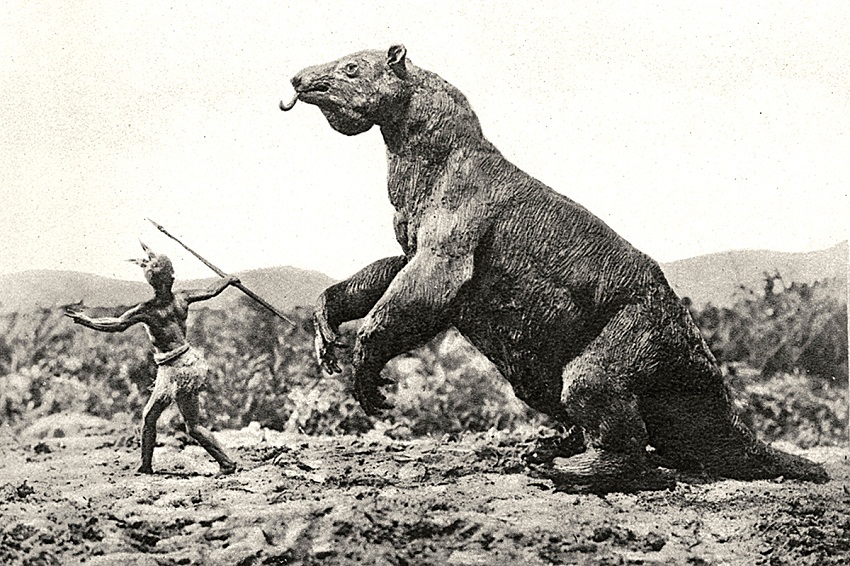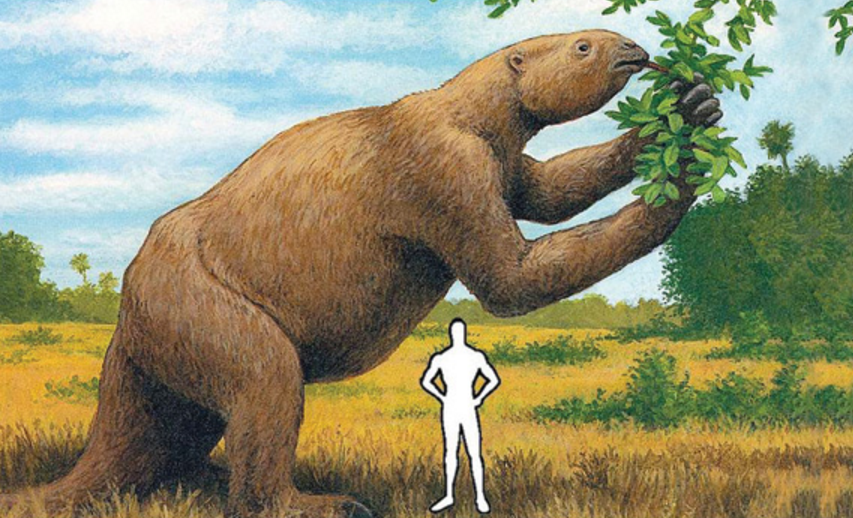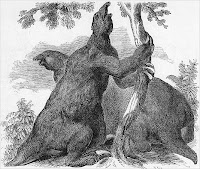


The researchers dismissed the possibility that the human track-maker was following the sloths simply to find an easier path through soft terrain. In places, the sloth appears to have reared up, perhaps to fend off an attacker. The sloth prints show sharp changes in direction, especially in areas where human footprints are numerous they zigged, we zigged. The dating is imprecise, so the researchers can’t say with certainty whether the prints represent several events that took place during a span of time or just a single pursuit perhaps the sloths were travelling as a group and were collectively harassed. The tracks of several sloths, and of several people, were found. “The smaller the body, the greater the probability of extinction.The researchers noticed something curious inside many of the sloth prints-human footprints, made not long after the sloth’s, the stride intentionally adjusted, as if the person were stalking the animal. Researchers said, “Big animals have a slow maturity and low fertility rate, but if they have a large brain, the survival rate increases,” adding, “Only animals with large brains were able to cope with human pressure and adapt to rapid climate change.” “The size of the brain can explain large animals that have survived to this day,” he said. However, 15,000 years ago, when people entered the Americas, they soon entered the path of extinction. The two-ton Glyptodon, armed with hard gloves and spines, has lived 23 million years with a small brain without worrying about predators. Griptodon, a relative of Armadillo, is proof that the large brain is not necessarily in favor of evolution. The imagination of glyptodone, which has lived for tens of millions of years in powerful gloves, but has died out with the advent of mankind.

If the brain is maintained with a lot of energy and the brain is large, the pregnancy period is long, the jaw is long, and the offspring are less likely to be extinct. However, large brains are not necessarily beneficial to the survival of animals. Researchers said, “Dingo, which was wilded by dogs brought to Australia by natives 4,000 years ago, overwhelmed Tasmanian pocket wolves and Tasmanian devils, which were predators at the time.” Find where to find water and food and find ways to respond to the new human hunting techniques. Researchers said, “Among animals of the same size, the rate of extinction was high in the classification group with relatively small brains,” adding, “The nanny’s neck, armadillo’s sole surviving petrel, and the kangaroo’s neck, where 1 ton-sized giant marsupials disappeared.”Īnimals with large brains can adapt flexibly to changing environments. The extinct straight-nosed elephant weighed 11 tons, nearly three times as much as the African elephant.

How vulnerable a large animal is is evident from the extinction of a 4.6-ton giant ground sloth, the size of a village bus, and a large ant licker (24kg), which weighs 1/200th, survived. So how did large animals like elephants and polar bears survive? Researchers said, “As a result of analyzing the brain size of 291 modern mammals and 50 extinct species, the size of the brain following the body size was a factor that determined the life or death of giant animals.” Giant animals are at high risk of extinction in the first place due to their small population and long lifespan and low fertility rates. The most vulnerable to these environmental changes were large animals. For the first time in Eurasia, mankind rapidly spread to the Americas and Australian continents, making it easy to prey on animals that first saw humans. After the last ice age covered much of the earth with ice for 25,000-12,000 years, the rapid interglacial period immediately hit, forcing animals to move their habitats in a hurry. The main cause of the mass extinction at the end of the Cenozoic era, where nearly half of the large mammals disappeared, is climate change and the spread of mankind. Jacob Dembitzer, a zoologist at Tel Aviv University in Israel, said in a paper published in the latest issue of the scientific journal Scientific Reports, “The larger the brain (115,000 to 500 years ago), the greater the probability of survival, and the brain of surviving mammals was 53%. Studies have shown that one of the reasons why giant animals such as mammoths, giant sloths the size of small buses, and armadillos the size of cars became extinct is that they were unable to adapt flexibly to environmental changes at the time due to their small brains.


 0 kommentar(er)
0 kommentar(er)
